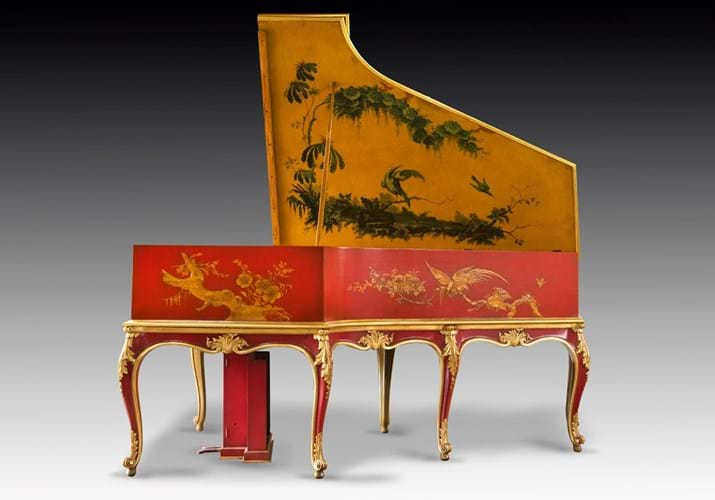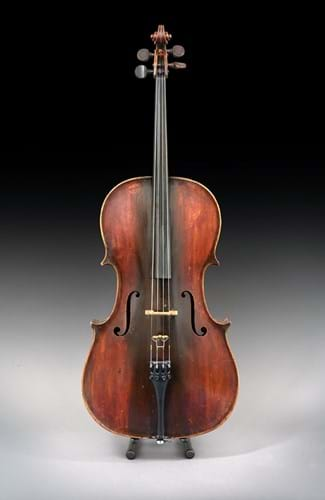
It was amassed by David Winston, who holds a Royal Warrant as Restorer and Conservator of Pianos to Her Majesty the Queen. Winston has restored some of the most valuable pianos in the world, including those owned and played by the likes of Beethoven, Chopin and Liszt.
The auction comprises 26 unique instruments dating from the 18th century to present day and is the first time the collection – many of which are one-off pieces with ‘significant historic importance’ – has been offered in its entirety.
Commenting on his collection, David Winston said: “The first thing for me is that it must be something that nobody else has. It must be both an excellent musical instrument and a beautiful object. Each was chosen for its unique place in history, art and culture.”
Self-playing piano
Among the lots expected to achieve the highest bids at the auction on September 23 is a rare 1925 Pleyel grand piano fitted with an original ‘Auto Pleyela’ self-playing mechanism. Coming with 65 original piano rolls, it can play extensive repertoire of compositions by itself.
In a spectacular Chinoiserie Louis XV case, it is signed by the French artist Leo Huillard and is one of only a few surviving examples of the model that combines this sophisticated mechanism with an exotic lacquered style. It is estimated at £40,000-60,000.
Also on offer is a Pleyel double piano from 1929, one of only 50 ever made. This model, which has a guide of £30,000-50,000, was once owned by the concert pianist Madeleine Lioux, the wife of French writer and minister of culture André Malraux, who bought it in 1946.

A 1929 double piano from Pleyel – estimated at £30,000-50,000 at Dreweatts sale of the David Winston collection.
Combining two pianos into one with two pianists playing on opposite side of the same instrument, the enormous soundboard area makes for an exceptionally resonant sound and provides musicians with a different experience of playing. There is also an intriguing device in which a lever can be engaged to permanently lift the dampers on one of the sides, so that one piano provides sympathetic resonance, while the other side is being played.
The piano was recently featured on tour in Paris and London for a recreation of the premier of Stravinsky’s ‘Les Noces’ in which two Pleyel Double grands were originally used.
‘The English Amati’
Meanwhile a late 18th century cello made by Benjamin Banks of Salisbury in 1786 will be offered Tennants’ sale in Leyburn, North Yorkshire on September 29.
Banks, known as the ‘English Amati’, was one of the finest English instrument makers of his age with his cellos being particularly sought-after.
He was born in Salisbury in 1727 and unusually, for such a fine craftsman of the era, remained based there for the rest of his life rather than moving to London. However, he probably had close links with the capital, and certainly sold instruments through dealers there.
The cello bears the original maker’s label printed with a decorative scrolling border and BENJAMIN BANKS,/Salisbury, Fecit 17 with the last two digits of the date 86 written in by hand. The label and handwriting of the last two digits of the date are typical of other known examples by the maker.
The instrument was sold by LP Balmforth & Son of Leeds to a gentleman in the north-east England for £165 in 1965, with paperwork certifying its authenticity issued by William E Hill & Sons of New Bond Street, London, in 1938.
At Tennants, it is estimated at £50,000-70,000.







